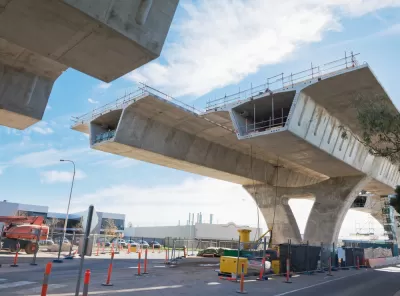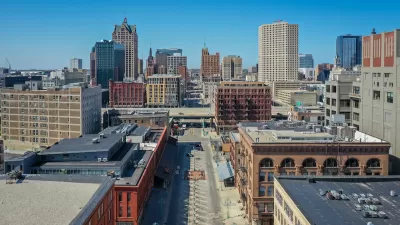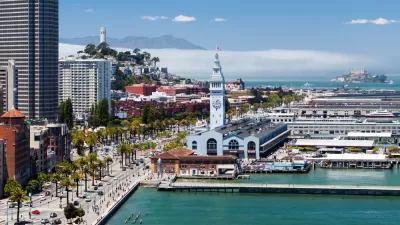Communities divided by freeways for decades are now looking to reconnect, and the U.S. Department of Transportation is stepping in to offer support.

The pendulum on new highway construction seems to be swing backwards now as more cities look to tear down, bury or bridge over existing freeways that have divided communities for years. Pete Bigelow of Car and Driver writes that the movement to break down the physical barriers caused by the interstate freeway system cutting through cities has gained strong support from U.S. Department of Transportation Secretary Anthony Foxx. Last month, the Dept. of Transportation launched the Every Place Counts design challenge, with the goal of finding creative solutions to stitch back together neighborhoods and communities divided by highways in cities around the country. Foxx and his team toured Philadelphia, Nashville, Spokane, and Minneapolis and spoke with locals about potential solutions.
Unlike the Smart City Challenge, a recent DOT competition that ultimately awarded $40 million in federal funds to Columbus, Ohio, to implement an innovative network of connected transportation options, there’s no funding attached to the Every Place Counts challenge. At this stage, the support is only in technical planning, though transportation officials say they’ll help communities pursue funds for implementation.
But both competitions highlight the way federal officials are examining transportation’s role in revitalizing urban cores and helping some of the country’s poorest residents gain access to health care, education, public spaces, and better jobs. In the case of Every Place Counts, the program is analyzing how transportation contributed to these problems in the first place.
As Bigelow notes, the idea of freeway removal is still relatively new, with opponents expressing fears of gridlock and suffering business. However, as case studies in Portland, Milwaukee, and San Francisco have shown, these fears are largely unfounded.
FULL STORY: The Future of Neighborhoods: Removing Urban Freeways Gains Fresh Traction

Planetizen Federal Action Tracker
A weekly monitor of how Trump’s orders and actions are impacting planners and planning in America.

The Simple Legislative Tool Transforming Vacant Downtowns
In California, Michigan and Georgia, an easy win is bringing dollars — and delight — back to city centers.

San Francisco's School District Spent $105M To Build Affordable Housing for Teachers — And That's Just the Beginning
SFUSD joins a growing list of school districts using their land holdings to address housing affordability challenges faced by their own employees.

In More Metros Than You’d Think, Suburbs are Now More Expensive Than the City
If you're moving to the burbs to save on square footage, data shows you should think again.

The States Losing Rural Delivery Rooms at an Alarming Pace
In some states, as few as 9% of rural hospitals still deliver babies. As a result, rising pre-term births, no adequate pre-term care and "harrowing" close calls are a growing reality.

The Small South Asian Republic Going all in on EVs
Thanks to one simple policy change less than five years ago, 65% of new cars in this Himalayan country are now electric.
Urban Design for Planners 1: Software Tools
This six-course series explores essential urban design concepts using open source software and equips planners with the tools they need to participate fully in the urban design process.
Planning for Universal Design
Learn the tools for implementing Universal Design in planning regulations.
Smith Gee Studio
City of Charlotte
City of Camden Redevelopment Agency
City of Astoria
Transportation Research & Education Center (TREC) at Portland State University
US High Speed Rail Association
City of Camden Redevelopment Agency
Municipality of Princeton (NJ)





























